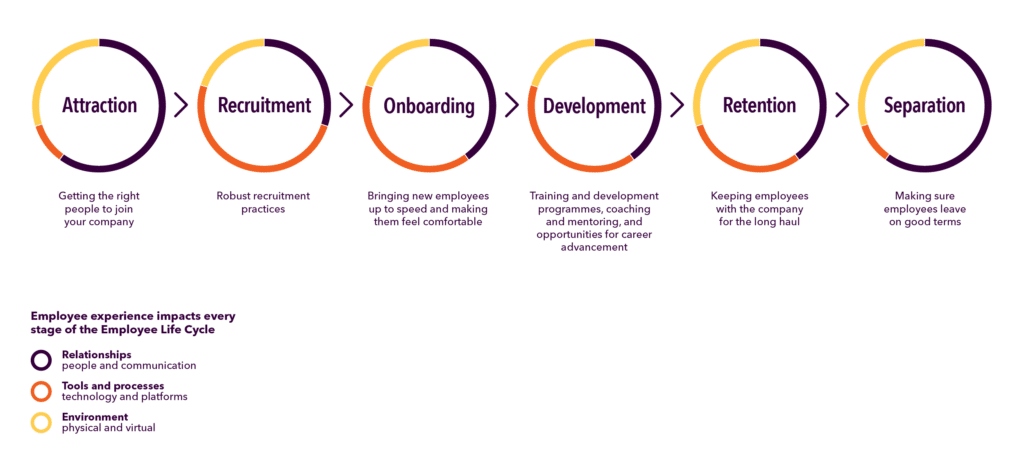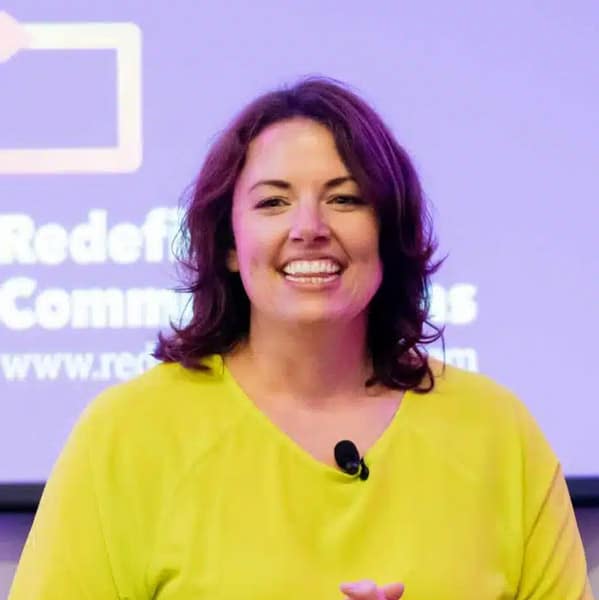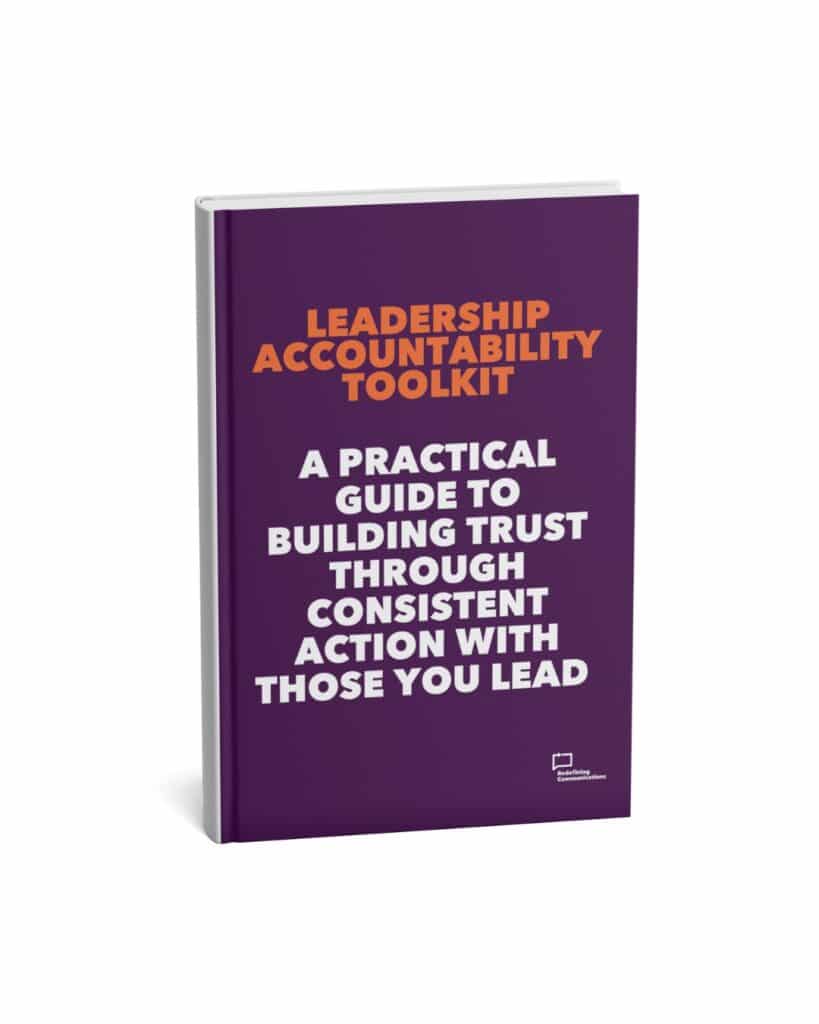The employee lifecycle typically consists of six stages: attraction, recruitment, onboarding, development, retention, and separation. Each stage presents its own challenges and opportunities, so it’s important to focus on them individually rather than one big, long journey.
The six stages of the employee lifecycle
Attraction: getting the right people to join your company. You want to make sure that the company’s values and culture align with the potential employee’s values and career goals, and you do this by making sure your employer brand is authentic and truthful. You might use certain language and channels to do this. This stage is critical because it sets the tone for the rest of the employee’s journey with the company.
Recruitment: we always talk about recruiting for values – you need the best people whose values align to your own. You need to make sure you give people options and ensure the process is as unbiased as possible, for example by using panels made of different genders, board members, line managers etc. You might even use blind recruitment at the start and use informal chats with the wider team to get feedback. Robust recruitment practices, centred around clear principles and procedures give a strong indication of what your organisation is like as an employer.
Onboarding: bringing new employees up to speed and making them feel comfortable in their new role and glad that they joined. This is the time to instil a sense of belonging too. This is where you provide training, introductions to the team, an organisational overview, and any other resources they may need to succeed in their role. This sets the foundation for the employee’s future success.
Development: helping employees grow and develop within the company. This may include training and development programmes, coaching and mentoring, and opportunities for career advancement. Development keeps employees engaged and motivated.
Retention: keeping employees with the company for the long haul. This may include benefits such as flexible work arrangements, opportunities for growth and development, and a positive work environment. It also includes ensuring employees are motivated, engaged, efficient and productive. This may include regular feedback, opportunities for recognition, and a sense of purpose. This saves the company time and resources that would otherwise be spent on attracting and training new employees. Engaged employees are also less likely to leave.
Separation: making sure employees leave on good terms. This may include an exit interview and a smooth transition to their next role. It might seem uncomfortable but it’s also useful to talk about this when people join too. Discussing how long they see themselves at the company and what they want to achieve normalises an ending, making those conversations more comfortable when they come. Done well, a good separation ensures employees have a positive memory of the organisation and are more likely to speak constructively about it to others.
When we look at improving employee experience, we map it to the employee lifecycle to focus on the organisational culture, improving aspects of line manager’s skills and the diversity and inclusion strategy. View our employee experience model and find out more about The Field Model and how it can improve your employee experience. We talk about this in more detail in our LinkedIn article: Warm welcomes, fond farewells – why every stage of the employee lifecycle matters. If you’d like to schedule a free 15-minute chat, just get in touch here.








